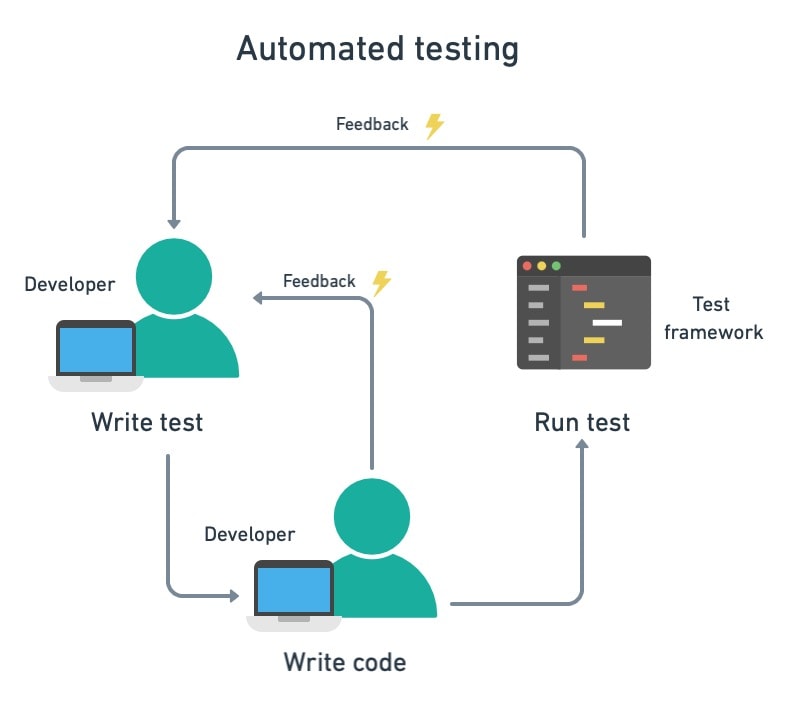From Handbook to Automated Testing: A Comprehensive Guide to Transitioning Efficiently and Effectively
In the realm of software program testing, the change from manual to automated procedures has come to be a progressively vital transition for companies seeking to improve efficiency and precision in their testing methods. The trip from handbook to automated screening is not without its challenges, however when come close to tactically and with a clear strategy in mind, the benefits can be significant.
Benefits of Automated Checking
Automated testing provides various advantages, boosting effectiveness and precision in software program development processes. Automated tests can be run all at once on multiple devices and operating systems, dramatically speeding up the screening stage contrasted to hand-operated screening.
Additionally, automated testing ensures a greater degree of accuracy in spotting defects. Uniformity in testing is also boosted, as automated examinations perform the same actions exactly each time they are run.
Selecting the Right Devices

Firstly, evaluate your demands and purposes. Comprehend the range of your job, the innovations entailed, and the ability of your team. This analysis will certainly aid you determine the capabilities and attributes you call for in your screening tools.
Secondly, consider the compatibility of the devices with your existing systems and procedures. Seamless integration with your existing software program growth lifecycle is necessary to make certain a smooth change to automation.
Additionally, evaluate the scalability and flexibility of the devices. As your screening needs evolve, the devices must have the ability to adapt and accommodate changes properly.
Finally, consider the support and area around the devices. Robust assistance and an active user neighborhood can offer important sources and support when executing automated testing. By meticulously considering these facets, you can select the right tools that line up with your requirements and established the stage for a successful change to automated screening.
Creating Effective Examination Scripts

When crafting test manuscripts, it is important to consider the details requirements of the software program being checked and ensure that the manuscripts address all essential performances. Clear and detailed naming conventions for examination scripts and test instances can enhance readability and maintainability. Furthermore, incorporating mistake handling devices within the test scripts can help in determining and resolving problems promptly.
Furthermore, arranging examination scripts right into modular parts can improve reusability and scalability, minimizing redundancy and boosting efficiency in test manuscript upkeep. Regular evaluations and updates to examine manuscripts are essential to keep speed with advancing software program requirements and performances. By complying with these concepts, testers can develop durable and effective YOURURL.com examination manuscripts that add dramatically to the success of automated screening processes.
Integrating Automation Into Workflows
Efficient combination of automation devices right into existing operations boosts and streamlines procedures productivity within software advancement cycles. When integrating automation right into process, it is critical to identify repetitive tasks that can be automated to conserve time and reduce human error. By perfectly incorporating automated screening tools like Selenium or Appium into the software application development lifecycle, teams can achieve faster feedback on code changes, leading to quicker bug detection and resolution. This assimilation enables continuous testing throughout the advancement process, making certain that any kind of problems are determined early, leading to higher software quality. In addition, automation can be made use of to activate tests automatically after each code commit, giving prompt recognition and maximizing testers to focus on even more complicated scenarios. Correct combination of automation tools calls for partnership between advancement, testing, and procedures groups to establish a unified operations that enhances efficiency and performance in providing premium software items.
Guaranteeing a Smooth Shift
Efficiently transitioning to automated testing involves careful preparation and careful execution to maximize and reduce interruptions effectiveness in the software application advancement procedure - automation testing. To make sure a smooth change, it is vital to start by carrying out a detailed analysis of the current screening processes and determining areas where automation can bring the most considerable advantages. Engaging with all stakeholders early while doing so, consisting of programmers, testers, and task managers, is crucial for garnering support and buy-in for the automation effort
Communication is key during this change phase. Clear communication of the objectives, benefits, and expectations of automated screening assists to handle any type of resistance or problems that might occur. Furthermore, providing adequate training and sources for staff member to upskill in automation tools and strategies is essential for making certain an effective shift.

Verdict
Finally, transitioning from manual to automated testing offers various benefits, consisting of increased efficiency and reliability. By selecting the appropriate tools, writing effective examination manuscripts, and incorporating automation flawlessly right into operations, companies can make sure a smooth and effective change. It is necessary to accept automation as a useful possession in software application testing processes to boost total top quality and efficiency.
In the realm of software application testing, the change from guidebook to automated procedures has become this contact form an increasingly important transition for companies looking for to boost efficiency and precision in their testing practices. Automated examinations can be run all at once on several devices and running systems, drastically speeding up the screening phase compared to manual testing. Consistency in screening is additionally boosted, as automated examinations carry out the exact same steps specifically each time they are run.To make sure the successful execution of chosen testing devices, the development of reliable test manuscripts plays an important role in confirming the performance and efficiency of automated processes - automation testing. By adhering to these concepts, testers can create efficient and durable test scripts that add substantially to the success of automated screening processes
Comments on “Mastering Automation Testing: Tools, Methods, and Benefits”